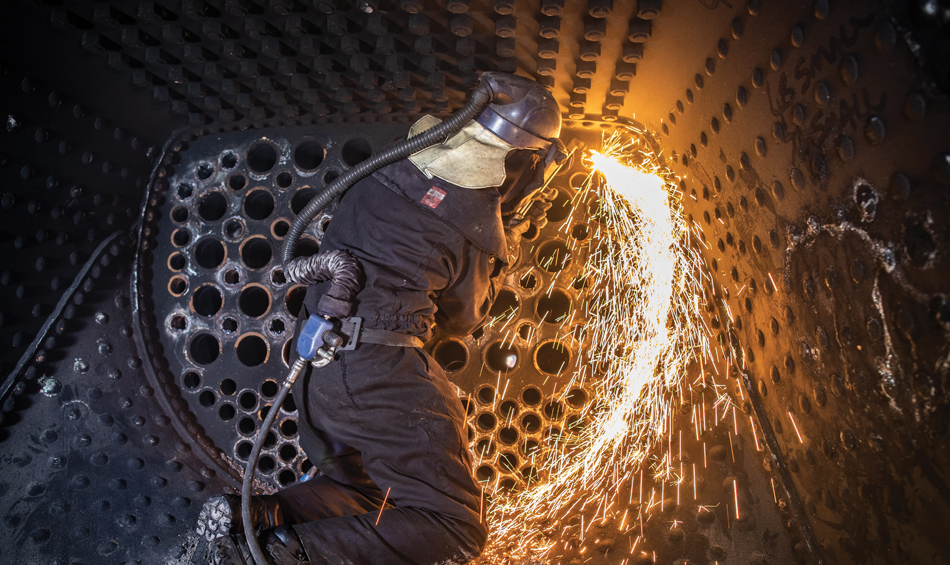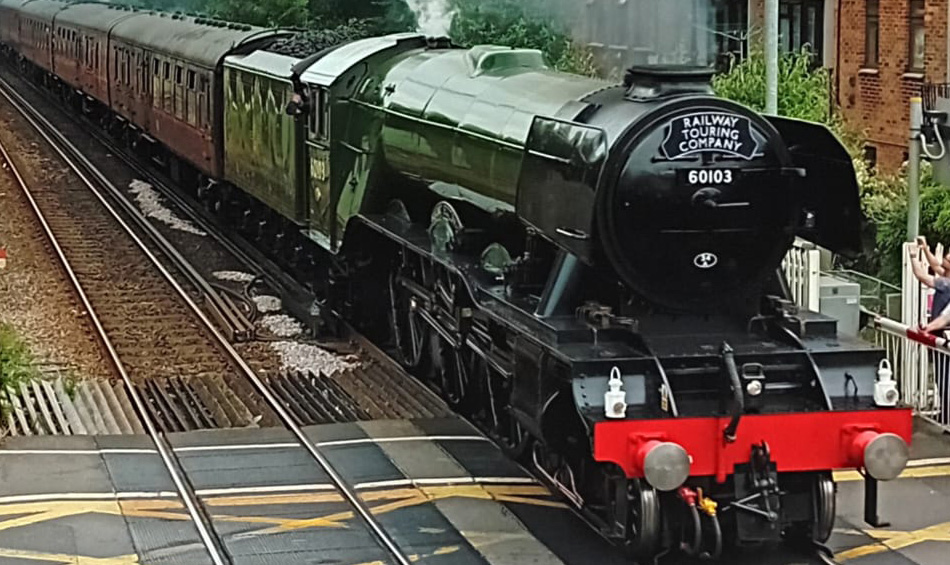Flying Scotsman: The Portsmouth Flyer
Ever since the Science Museum Group first approached us to collaborate in the centenary celebration of Britain’s most loved steam locomotive, we have been patiently waiting for it to reach the sunny south coast. Saturday 17thJune was the day that passengers would board Flying Scotsman at London Victoria and make their way to Portsmouth Harbour. Due to its huge popularity and concerns for safety the locomotive’s exact route and timings were not disclosed until the last moment. When revealed, fans scrambled to find the best location to view this steel beauty from a golden era. Carrying its own coal to convert water into steam power its return journey saw it pass through stations as far eastwards as Cosham, Farlington and Havant. With plumes of steam seen from distance the locomotive came into view, sporting its British Rail number, 60103, and painted in ‘Brunswick Green’.


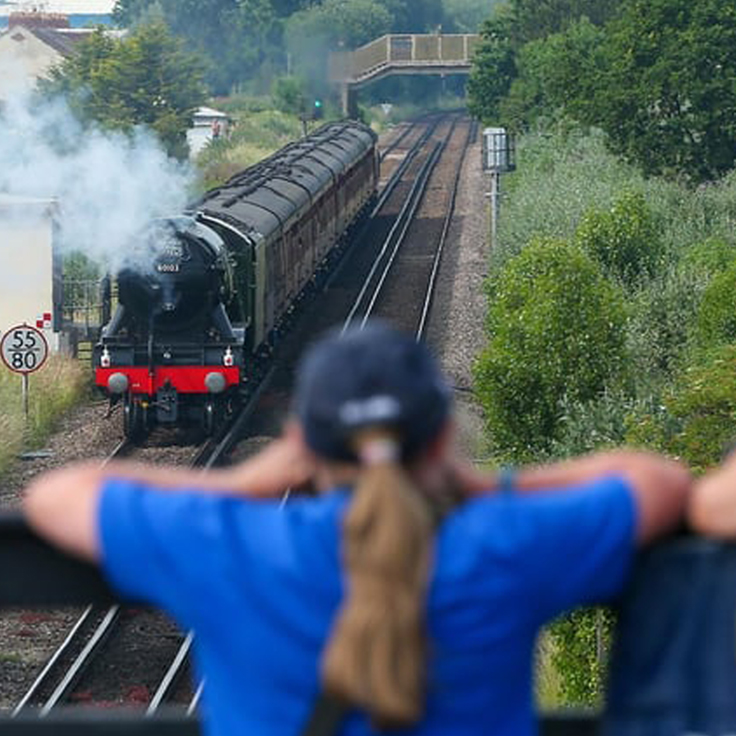
1472 ‘Flying Scotsman’ – A Brief History
The first locomotive of the newly formed London and North East Railway (LNER), ‘Flying Scotsman’, as it would later be named, was designated the unique number 1472 and lovingly painted in the railway’s apple green. On Saturday 24th February 1923 it was clearly a site to behold as it left the Doncaster Works where it had been built. Gresley had carefully designed this A1 locomotive to haul 600 tons at a speed of at least 50 mph to handle the increasing length and weight of the mainline express services, not realising that he had built a train that would one day break records and be loved by millions across the world.
The locomotive’s first glimpse of fame was when it was renamed, 4472 ‘Flying Scotsman’, after the daily 10:00 London to Edinburgh rail service, and showcased at the 1924 British Empire Exhibition in London.
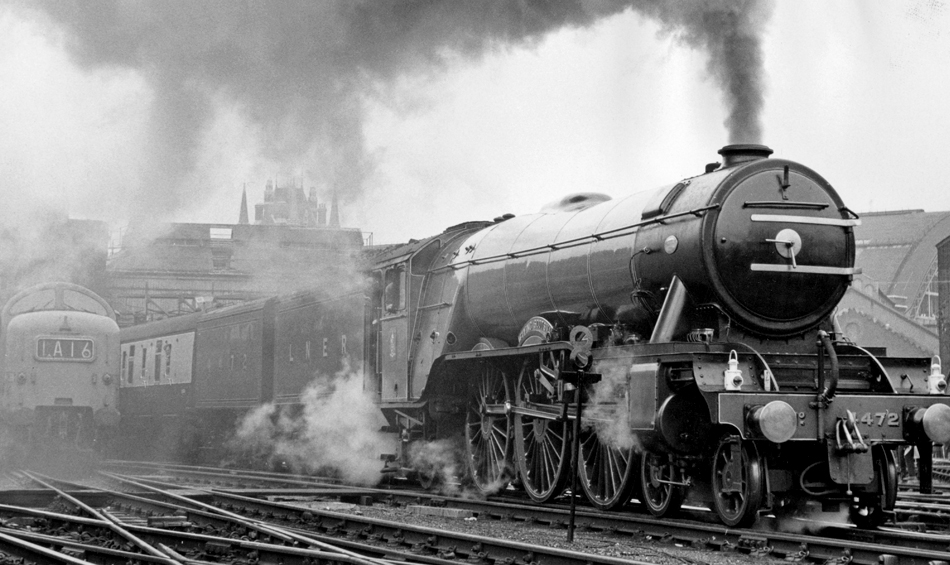
By 1928, Gresley updated the engine to the new A3 class with boilers that could withstand a pressure up to 225 psi, and more efficient valves and cylinders. These new high-pressure boilers had a greater superheating surface that would later be fitted with a ‘banjo dome’ steam collector. The design result was a more powerful, more efficient engine. Given a new type of tender with a corridor that allowed a new rail crew to take over without stopping, the ‘Flying Scotsman’ hauled the first ever non-stop London to Edinburgh service on 1st May that same year, arriving in just over 8 hours. A record breaker! Just 4 years later it would become the first locomotive in the UK to exceed 100 mph, on a special test run.
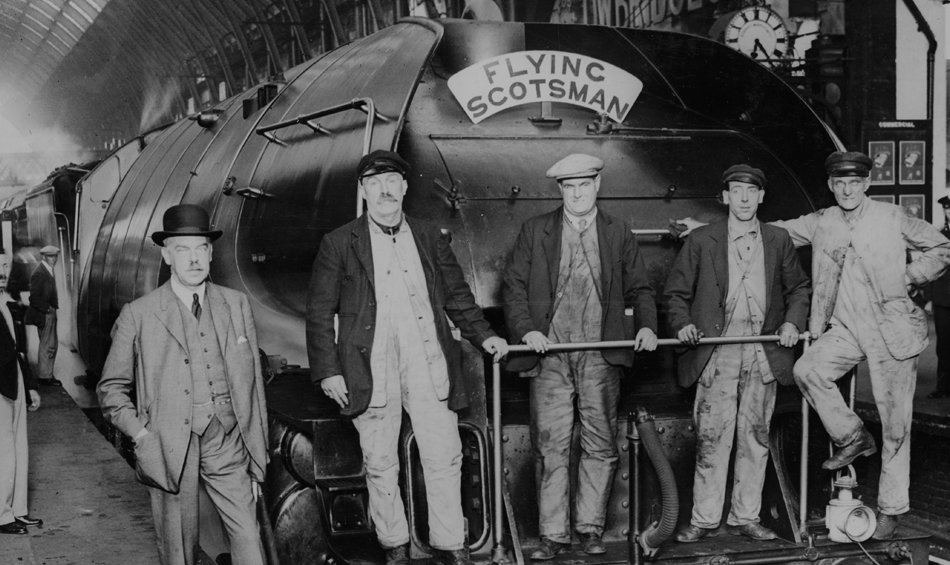
Sir Nigel Gresley – British Design Pioneer
It could be argued that the Flying Scotsman’s story is as much about its creator, pioneering design-engineer, Sir Nigel Gresley, as it is about the legendary train. Born in Edinburgh but raised in Derbyshire, Nigel Gresley’s interest in railways first began in the small village of Netherseal where he grew up. Serving apprenticeships at the Crewe Works of the London and North Western Railway (LNWR), and the Horwick Works of the Lancashire and Yorkshire Railway (L&YR), his gift for engineering design saw him steadily progress to Chief Mechanical Engineer at the (LNER), where he would not only design the record-breaking Flying Scotsman, but another history-maker, Mallard, which to this day holds the record for the fastest steam locomotive in the world, at 126 mph.
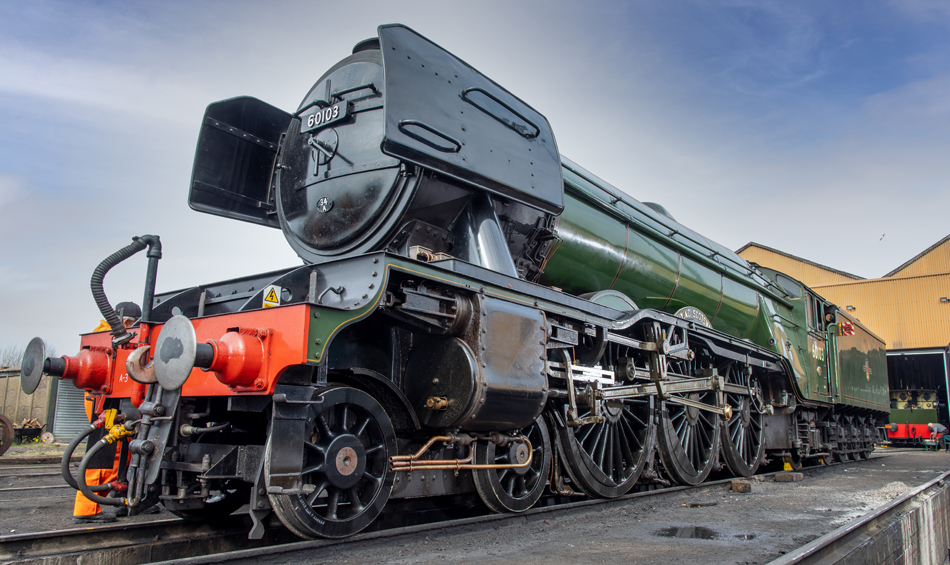
Steel Boiler Tube Recast
100 mph. 100 years. Thousands of hours of wear and tear on Gresley’s A3 engine resulted in steel boiler tubing from the ‘Flying Scotsman’, being removed during scheduled refits. This steel is tangible history touched by steam that has powered thousands of journeys. It was a real gift for us at Zero West to be given this precious metal. The Science Museum Group knew our history, knew we had the expertise to rework the material and create watches that reflect what ‘Flying Scotsman’ is and means to so many people. However, repurposing the boiler tube while keeping the natural surface patina from thousands of hours of use, was no small task. With our usual tenacity for tough but precise engineering tasks, the boiler tube was cleaned and blasted, taking care to retain the historic character. The thick steel walled tubing was slit and flattened into a rough rectangular sheet for cutting. Precision milled, the sheet was then punched into 200 unique discs laser engraved with the Flying Scotsman’s original designation, FS 1472.


